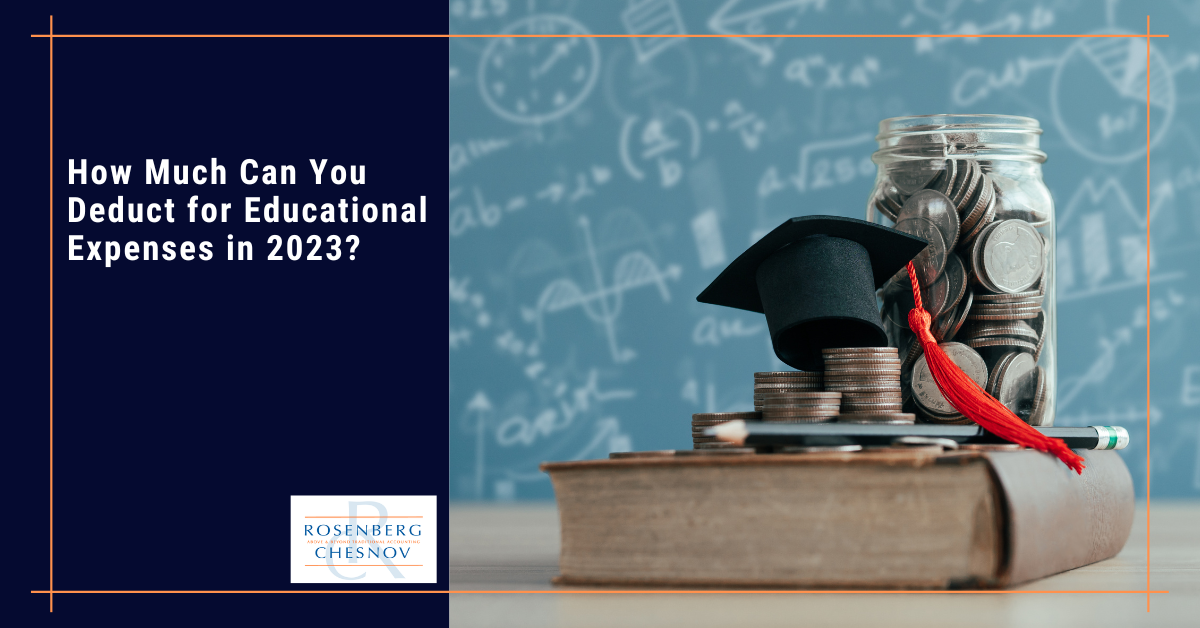Understanding education tax breaks
There are two main types of education tax breaks available: deductions, which reduce the amount of your taxable income, and credits, which directly reduce the amount of tax you owe dollar for dollar. Sometimes, tax credits can even reduce your tax liability below zero, putting money back in your pocket as a refund.
Let’s start with a brief overview of two commonly-used credits.
The American Opportunity Tax Credit (AOTC)
This credit is available to eligible undergraduate students for up to four years of post-secondary education. It covers a portion of qualified expenses and course materials up to an annual limit of $2,500 per student. Additionally, if the credit brings the amount of tax you owe to zero, you can have 40 percent of any remaining amount of the credit (up to $1,000) refunded to you.
To be eligible for the AOTC, you must be pursuing a degree or other recognized education credential, enrolled at least half-time for at least one academic period beginning in the tax year, not have completed the first four years of higher education at the beginning of the tax year, not have claimed the AOTC or the now-defunct Hope Scholarship credit for more than four tax years, and not have a felony drug conviction at the end of the tax year.
The Lifetime Learning Credit (LLC)
Unlike the AOTC, which is limited to the first four years of post-secondary education, the Lifetime Learning Credit is available for an unlimited number of years. This credit encourages lifelong learning and skill development by providing financial assistance to individuals pursuing further education beyond the undergraduate level.
To claim the Lifetime Learning Credit (LLC), you must meet three criteria: paying qualified education expenses for higher education for an eligible student enrolled at an eligible institution—yourself, your spouse, or a dependent on your tax return. The eligible student must be enrolled for at least one academic period in the tax year, which could be semesters, trimesters, quarters, or a summer school session determined by the school.
Unlike the AOTC, the LLC is not refundable. This means that while it can reduce your tax liability to zero, it cannot result in a refund.
Now that we have a broad understanding of these two credits, let’s dive deeper into education deductions.
What is considered a qualified education expense for deductions?
Let’s say you want to offset necessary education expenses, like tuition, fees, or other expenses. You can do so by deducting the amount from your taxable income, thereby lowering the amount of taxes you can owe (this is sometimes called a “write-off”).
However, you can only deduct certain eligible expenses. To qualify, a given expense must be required for enrollment or attendance at an eligible educational institution and be paid for during an academic period starting during the tax year or the first three months of the next tax year.
These expenses can include fees mandated by the institution. Other common examples include:
- Tuition and Fees: The cost of tuition and required fees directly related to enrollment at the educational institution.
- Books and Supplies: Expenses for books, supplies, and equipment necessary for the courses.
- Course-related Software: Costs of software required for enrollment or attendance in specific courses.
- Academic Materials: Expenses for lab fees, art supplies, and other materials necessary for education.
- Research Materials: Costs for research materials needed for coursework or projects.
- Equipment: Expenses for purchasing or renting educational equipment, such as computers, if required by the institution.
- Activity Fees: Fees paid for extracurricular activities directly related to the enrolled course.
You can claim an education credit for qualified education expenses paid by cash, check, credit, or debit card or paid with money from a loan.
More good news: the interest you pay on a student loan is also often tax-deductible, provided the loan was solely for educational purposes.
The Student Loan Interest Deduction allows you to deduct up to $2,500 of interest paid on a qualified student loan during the tax year. The deduction gradually phases out based on your income, and you can claim it as an adjustment to income without itemizing.
To qualify, you must have paid interest on a qualified student loan, meet the income limits, and not file as married filing separately.
If you paid for expenses directly with money from a loan, you can take the credit for the year you paid the expenses (not the year you got or repaid the loan).
What is not a qualified education expense?
Again, it’s important to remember that not all expenses qualify, even if they could be considered essential, like room and board or transportation (both of which do not qualify for education expense deductions.)
Insurance and medical fees also do not qualify, nor do expenses related to personal living expenses, sports, games, hobbies, or non-credit courses. Additionally, expenses cannot be paid with tax-free funds,
However, you can claim credits, like those mentioned above, for any amounts not refunded if the student withdraws.
Can you deduct education expenses if you don’t itemize?
Yes, you can deduct education expenses even if you don’t itemize your deductions.
While many tax deductions require taxpayers to itemize their deductions on Schedule A of their tax return, certain education-related deductions are available above-the-line. These above-the-line deductions are subtracted directly from your gross income, reducing your adjusted gross income (AGI) and, subsequently, your taxable income.
However, there have been some changes in recent years to these above-the-line deductions. For example, Form 8917, which allowed taxpayers to deduct up to $4,000 from taxable income, is now a thing of the past — this “Tuition and Fees Deduction” expired on December 31, 2020.
This repeal is effective for years 2021 and later, which means qualified fees paid in the calendar years 2018, 2019, and 2020 may still be eligible. As an alternative to this deduction, taxpayers may want to consider investing in a 529, or “Qualified Tuition” Plan, which we discussed in more detail recently on this blog.
Can you claim education expenses without a 1098-T?
A 1098-T is a tax form that educational institutions provide to eligible students, as well as the Internal Revenue Service (IRS). The purpose of the form is to report the amount of qualified educational expenses paid by the student during the tax year.
While the information on the 1098-T helps determine eligibility, it is not required when claiming education-related tax benefits — as long as you have accurate records of your qualified expenses.
It would be best to keep receipts, bills, tuition statements, and other relevant documentation supporting your claim. When preparing your tax return, you can use these records to calculate the total amount of qualified education expenses you paid during the tax year.
Not having a Form 1098-T can make the process more challenging, but it does not necessarily mean you cannot still claim your expenses.
However, you must ensure that the expenses you claim meet the IRS requirements for eligible education tax benefits. If you have any uncertainties or questions, consider seeking advice from tax professionals (like us!) to ensure you take advantage of all eligible tax benefits accurately and within tax regulations.
Would you like some help?
If you are a client and would like to book a consultation, call us at +1 (212) 382-3939 or contact us here to set up a time.
If you aren’t a client, why not? We can take care of your accounting, bookkeeping, tax, and CFO needs so that you don’t have to worry about any of them. Interested? Contact us here to set up a no-obligation consultation.
Stay informed
Interested in receiving updates in your mailbox? Check out our newsletter, which is full of information you can use. It comes out once every two weeks, and you can register for it below.





